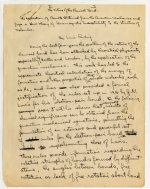
Pauling's Great Years of Achievement in Structural Chemistry, Part 1 (1931-1932)
1931
On February 10, Peter Jeffress, Pauling’s second son, is born.
On April 6, while he is teaching in Berkeley, Pauling’s theory of hybrid bond orbitals is published in the Journal of the American Chemical Society: "The Nature of the Chemical Bond. Application of Results Obtained from the Quantum Mechanics and from a Theory of Paramagnetic Susceptibility to the Structure of Molecules." This is the first of what will become a very important and influential series of papers on the nature of the chemical bond. Pauling himself calls this paper "very important—the best work I’ve ever done."
In June, Pauling finishes his paper on one-electron and three-electron bonds (it is published, as the second in his series on the nature of the chemical bond, later in the year).
Pauling is made full professor at CIT.
On July 1, E. Bright Wilson, Jr. arrives at CIT (he will become an important collaborator of Pauling’s).
On September 2, Pauling travels to Buffalo, New York to receive the first award of the A.C. Langmuir Prize at a meeting of the American Chemical Society.
In the fall, he completes his third paper in the nature-of-the-chemical-bond series on the transition from ionic to covalent bond types.
1932
In his work on the determination of crystal structures, Pauling moves from the silicate to the sulfide minerals. An early example of this change in interest is the paper he and L.O. Brockway publish on the crystal structure of chalcopyrite.
After lecturing at Berkeley in March, he travels to the Massachusetts Institute of Technology where he gives a series of lectures on chemistry and physics.
His important and influential paper on the electro-negativity scale is published in JACS (he would later wonder why he did not call it the "electropositivity scale").
On May 31, a day after Pauling returns from Cambridge, Massachusetts, his daughter Linda is born.
Pauling receives his first grant from the Rockefeller Foundation for a program of research in structural chemistry.
James Lynn Hoard, who completed a series of X-ray crystal-structure determinations under Pauling’s direction, receives his Ph.D. degree, as does Jack Sherman, who, besides a structure determination of the micas, did some calculations of atomic scattering factors for Pauling.
At a faculty meeting, Robert A. Millikan, citing the Depression, asks that the faculty vote to cut their salaries by 10%. Pauling, understanding the need for financial sacrifice, opposes Millikan’s action because he believes that only the Board of Trustees, not the faculty, has this power and responsibility.
In the fall, Pauling, who believes that noble-gas compounds can be made, gets some xenon for Don Yost, expecting that he will obtain, in reaction with fluorine, XeF6 or XeF8, but Yost, in what is called "the most unenthusiastic investigation any investigator ever carried out", does not find the compounds (later analysts, including Neil Bartlett who found the fluorides of xenon, believed that a fluoride of xenon was most likely there).
Pauling, still faithful to the Republicanism of his family, votes for Herbert Hoover (and not for Franklin D. Roosevelt) in the November elections.
Pauling meets and talks with Albert Einstein, who is at CIT for the winter months. Einstein attends a seminar by Pauling on the quantum mechanics of the chemical bond (Einstein claims to reporters that he did not understand the lecture).
Table of Contents
- The Ancestry of Linus Pauling (The Paulings)
- The Ancestry of Linus Pauling (The Darlings)
- Linus Pauling's Childhood (1901-1910)
- Linus Pauling's Adolescence (1910-1917)
- Pauling's Years as an Undergraduate at Oregon Agricultural College, Part 1 (1917-1919)
- Pauling's Years as an Undergraduate at Oregon Agricultural College, Part 2 (1919-1922)
- Linus Pauling as a Graduate and Postdoctoral Student at the California Institute of Technology, Part 1 (1922-1923)
- Linus Pauling as a Graduate and Postdoctoral Student at the California Institute of Technology, Part 2 (1924-1926)
- A Guggenheim Fellow in Europe during the Golden Years of Physics (1926-1927)
- Early Career at the California Institute of Technology (1927-1930)
- Pauling's Great Years of Achievement in Structural Chemistry, Part 1 (1931-1932)
- Pauling's Great Years of Achievement in Structural Chemistry, Part 2 (1933-1935)
- Pauling's Increasing Involvement in Molecular Biology (1936-1939)
- The War Years, Part 1 (1940-1942)
- The War Years, Part 2 (1943-1945)
- The Postwar Years, Part 1 (1946-1947)
- The Postwar Years, Part 2 (1948-1949)
- Proteins, Passports, and the Prize (1950-1954)
- Increasing Involvement in World Peace, Part 1 (1955-1958)
- Increasing Involvement in World Peace, Part 2 (1959-1963)
- The Center for the Study of Democratic Institutions (1964-1967)
- The University of California, San Diego (1968-1969)
- Stanford University (1969-1972)
- An Institute for Science and Orthomolecular Medicine, Part 1 (1973-1977)
- An Institute for Science and Orthomolecular Medicine, Part 2 (1978-1981)
- The Years Alone: Pauling after the Death of Ava Helen, Part 1 (1982-1988)
- The Years Alone: Pauling after the Death of Ava Helen, Part 2 (1989-1994)
- About the Author



